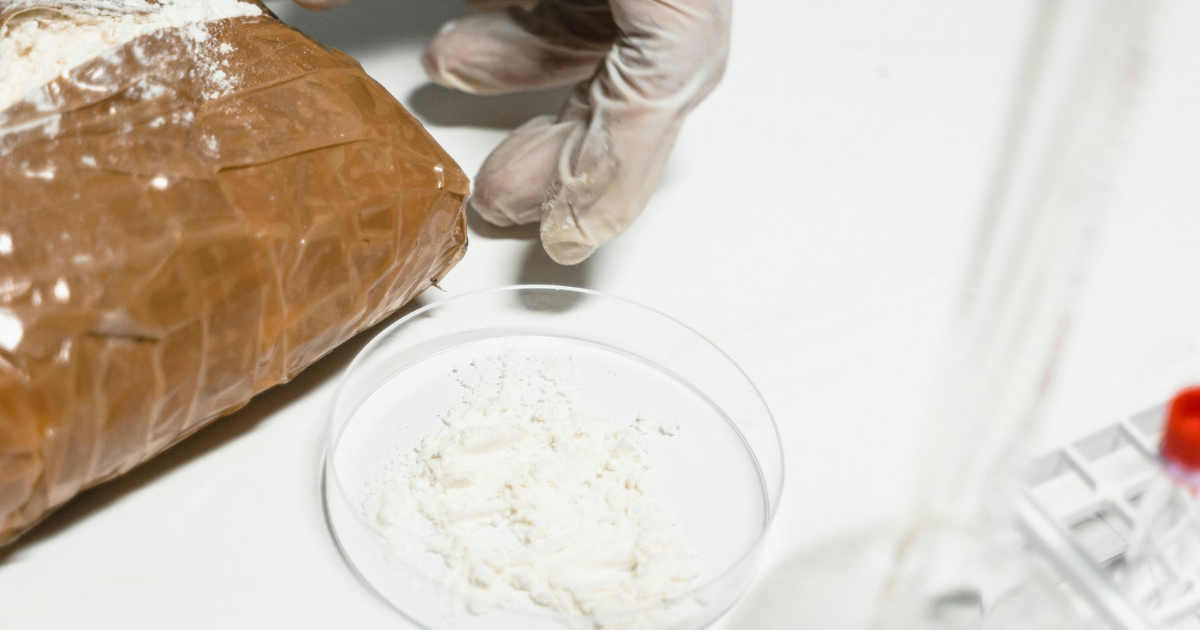According to the National Institute on Drug Abuse, cocaine is the most prevalent illicit drug in the U.S. because over 4.8 million people aged 12 years and above reported having used it in 2022. Although the cocaine high does not last long, the drug itself may stay on the body significantly longer.
So, what is the life of cocaine in the body? This would vary depending on the kind of cocaine drug test provided, and some elements concerning the person, like the rate of metabolism applied, how often the individual uses it, and how much he or she uses it. Time of detection is also dependent on the way of testing, i.e., cocaine in the urine, blood, saliva, or hair test.
Let’s break down the time it takes to detect cocaine, how the cocaine metabolites act in the brain, and the science behind half life of cocaine.
Cocaine Detection Time
Cocaine retention in the body is dependent on a variety of factors, and it may largely determine its detectability in a drug test. The procedure of performing the drug tests also significantly contributes to finding the detection time of cocaine. These are some of the major things that affect the detection of cocaine:
- Type of test used (urine, blood, saliva, or hair)
- Frequency of use (occasional vs. chronic use)
- Dosage taken
- Route of administration (snorted, smoked, injected)
How Long Does Cocaine Stay in Your System?
The duration of time varies depending on the kind of drug test applied.
An outline of the average detection window of cocaine by testing method is shown in the following table:
| Test Type | Detection Window |
| Urine Test | 1–3 days (occasional use), up to 2 weeks for heavy users |
| Blood Test | 12–48 hours |
| Saliva Test | 1–2 days |
| Hair Follicle Test | Up to 90 days |
Cocaine Half-Life
Cocaine has an average half-life of 30 to 90 minutes, depending on factors like dosage, metabolism, and method of use. This refers to how long it takes for half of the drug to be metabolized and cleared from the body.
However, the presence of this short window does not mean that the drug has already been completely removed from the body. Instead, cocaine is transformed into chemical by-products called metabolites such as benzoylecgonine and ecgonine methyl ester. These are metabolites that take much longer, and they are the main substances found during a drug test.
How It Affects Drug Testing Windows
Cocaine metabolism is not always fast, which results in a short time of detection. In fact, since the drug tests are often trained at the metabolites of the specific drug as opposed to the actual drug itself, the windows of detection could still be open long after the last intake.

That is how the short half-life of cocaine and the long half-life of the metabolites affect various types of drug tests:
| Drug Test Type | Effect of Cocaine Half-Life |
| Urine Test | Detects metabolites; can show positive results 1–3 days after use, or longer for heavy users. |
| Blood Test | Detects active cocaine; short half-life means it’s only detectable for 12–48 hours. |
| Saliva Test | Also detects recent use; generally within 1–2 days. |
| Hair Follicle Test | Detects long-term use through metabolite buildup; remains detectable for up to 90 days. |
Cocaine Metabolites
When the effect of cocaine ends, it does not disappear entirely when the body system detects it. Rather, it is converted by the body into chemical byproducts, or cocaine metabolites. They are formed when the cocaine is acted upon by the liver and other body organs, and could even remain longer in the system than the drug.
Benzoylecgonine is the most famous and frequently examined metabolite and is usually the main focus in a cocaine drug examination, particularly these urine tests. Ecgonine methyl ester is another famous metabolite, and it can also be identified in specific tests.
What They Are and Why They Matter
Cocaine metabolites do not produce a high, but they play a crucial role in detection. Since the cocaine half-life is short, drug testing uses the metabolites to identify the use in the recent past or today.
The following brief description tells about the most significant cocaine metabolites:
| Metabolite | Origin | Why It Matters |
| Benzoylecgonine | Formed in the liver | Main marker in urine tests; detectable for up to several days |
| Ecgonine Methyl Ester | Produced via enzymatic breakdown | May appear in both urine and blood; used as a secondary marker |
| Cocaethylene | Created when cocaine is used with alcohol | Indicates polydrug use; potentially more toxic than cocaine alone |
Cocaine Urine Test
Cocaine urine test is the most common test used to detect drug presence during employment tests, court cases, examinations into rehab centers, and in normal health facilities. It is not invasive, not cumbersome, and can diagnose the use of cocaine even when the effect is out. A majority of the urine drug screens do not directly test for the presence of cocaine, but the primary metabolite of cocaine, benzoylecgonine, which is excreted more slowly in the body than the parent drug.
Most Common Testing Method Explained
The urine test for cocaine works by identifying the presence of benzoylecgonine, which is typically detectable:
- 1 to 3 days after occasional use
- Up to 7–14 days in chronic or heavy users
Since it does not test for cocaine but its metabolites, this test offers a greater detection period compared to the results of a blood or saliva test. It is believed to be dependable, readily accessible, and administered – this is why it is employed as the reference procedure in the greatest number of cocaine drug testing systems.
Cocaine Blood Test
Cocaine blood test is not very common compared to urine testing, but it is effective in higher degree of detecting present or recent use of cocaine. The technique is simple and measures the amount of cocaine and its derivatives directly in the blood, which is why it is perfect in emergencies, accidents, or where immediate impairment has to be verified.
Accuracy and Detection Time
It is a very accurate and sensitive cocaine blood test, which, however, should be given within a short period after use. That is what you should know:
- The actual tracing of cocaine in the body is usually within a period of 12 to 48 hours.
- The only lasting metabolite, benzoylecgonine, can last up to 2 days.
- It can provide a specific level of concentration, and therefore, it can be used to establish dosage and recent exposure.
Cocaine Saliva Test
The cocaine saliva test is very fast, simple to perform, and is widely applicable in roadside or within a workplace test. It can identify recent usage of cocaine and certain metabolites in the oral fluid and can therefore be helpful in the identification of very recent cocaine usage. The fact that saliva testing is non-invasive and doesn’t require the same level of privacy as urine testing.
Nonetheless, the approach is associated with a lower detection window, which does not help determine previous drug or substance use that is not more than a day or two ago.
Fast Results, Short Window
Saliva drug such as cocaine testing, are quick-because the results take minutes in most cases-and not as effective in detecting the substance. And here is what you can anticipate:
- One of the most common places to find traces of cocaine after its use is the saliva.
- The screening period usually has a 24-48-hour duration, which depends on the dosage and frequency.
- It is perfect when a timely test is needed, when the test is done directly, as on the road, or during a first assessment after an accident.
Get Expert Cocaine Detection Help at Opus Treatment
Whether you or your loved one is going through cocaine testing, dealing with the addiction, or simply requires professional advice, Opus Treatment can assist you. In our team, we provide personal attention, detox, and long-term life programs that will suit your needs. Whatever the drug you are on is or whatever stage in your healing process you want to start, call us now.
For confidential help and support, contact Opus Treatment today.

FAQs
How do cocaine metabolites affect detection times in drug tests?
Most of the metabolites of cocaine, like benzoylecgonine, also last longer than cocaine itself. Most drug tests target these metabolites and can detect up to several days, and even weeks.
What is the average cocaine half-life, and how does it impact drug test results?
The half-life of cocaine is generally 30 to 90 minutes, and so it exits the bloodstream fast. But its metabolites have a significantly increased duration of stay and thus are the targets in most tests on drugs.
How reliable is a cocaine urine test compared to other testing methods?
One of the most reliable urine tests concerning recent use is the cocaine urine test. They have a much more extended window of detection compared to blood or saliva tests, and they are highly utilized in the medical and legal fields.
What factors can influence the outcome of a cocaine blood test?
Blood tests are very critical in the timing. Factors such as metabolism, dosage, frequency, and time since the drug was consumed distort the accuracy of the result.
How long can cocaine be detected in a hair test compared to a saliva test?
Hair tests will have a longer history of drug use of 90 days on an individual, which will be indicative of long-term use of cocaine. Saliva tests, on the other hand, only provide a detection period of approximately 1 to 2 days after cocaine consumption.




